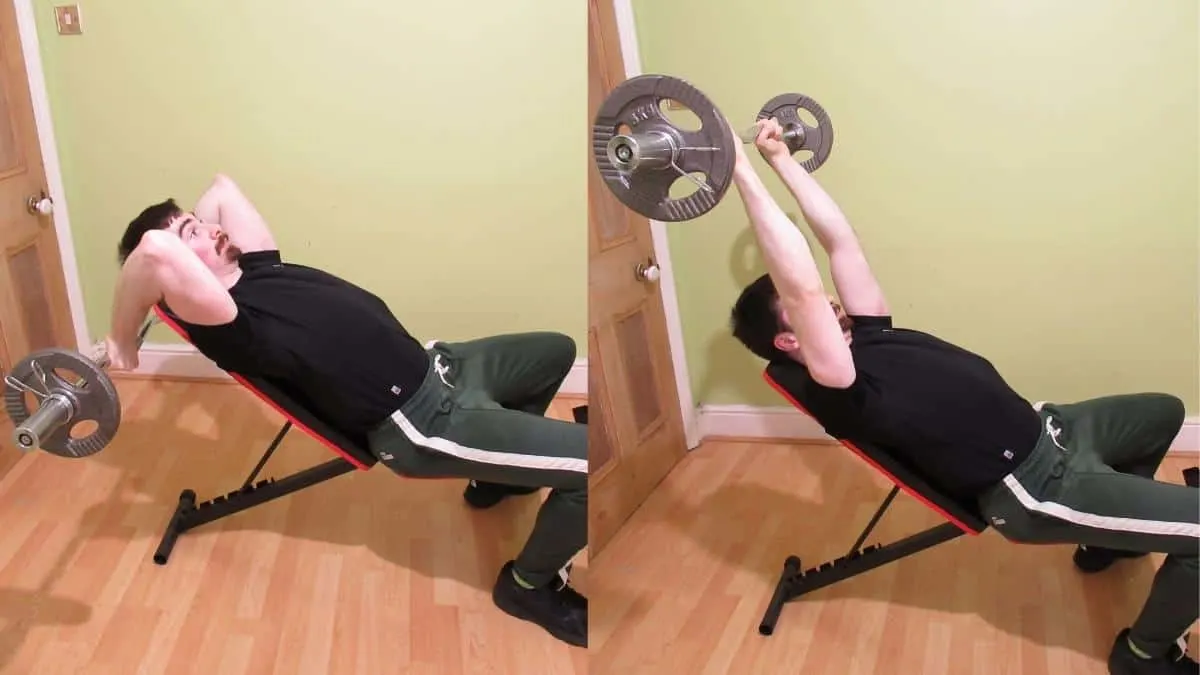Knowing the triceps brachii origin and insertion helps you to understand how to best train each head of the triceps.
For example, knowing that only the long head crosses the shoulder joint, we can deduce that exercises like the lying EZ bar tricep extension are optimal because they combine elbow extension (a feature of every tricep exercise) with shoulder extension, the long head’s second function.
This guide explains how to do an incline EZ bar tricep extension with the proper form and then discusses the effectiveness of the exercise. If you don’t have access to an EZ bar, however, then you can do an incline dumbbell tricep extension instead and still get comparable results.
Related: Overhead EZ bar extension
Incline EZ bar tricep extension exercise details
- Also Known As: Incline easy curl bar tricep extension
- Main Muscles: Triceps
- Exercise Type: Strength
- Exercise Mechanics: Isolation
- Difficulty Level: Intermediate
- Equipment Needed: EZ bar, weights, bench
How to do an EZ bar incline tricep extension
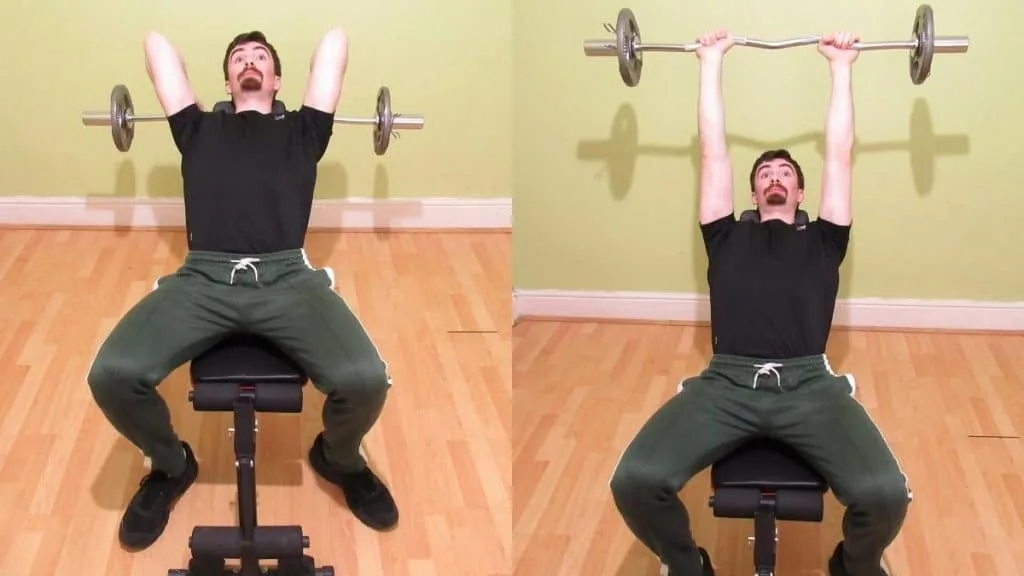
- Set the back pad of an adjustable bench to a 45-degree angle.
- Load some weight onto an EZ bar, or, for more convenience, use a preloaded bar.
- Grab the bar with a close overhand grip and lie on the bench with your back against the pad.
- Press the weight up so that it’s positioned directly over your head.
- Lower the bar behind your head by breaking at your elbows.
- Lower the bar until you feel a strong triceps stretch (likely when your forearms and biceps touch at the bottom of the rep).
- Reverse the movement by flexing your triceps until your arms are completely locked out.
- Perform 3-5 sets of 8-20 reps in total.
Incline EZ bar tricep extension training recommendations
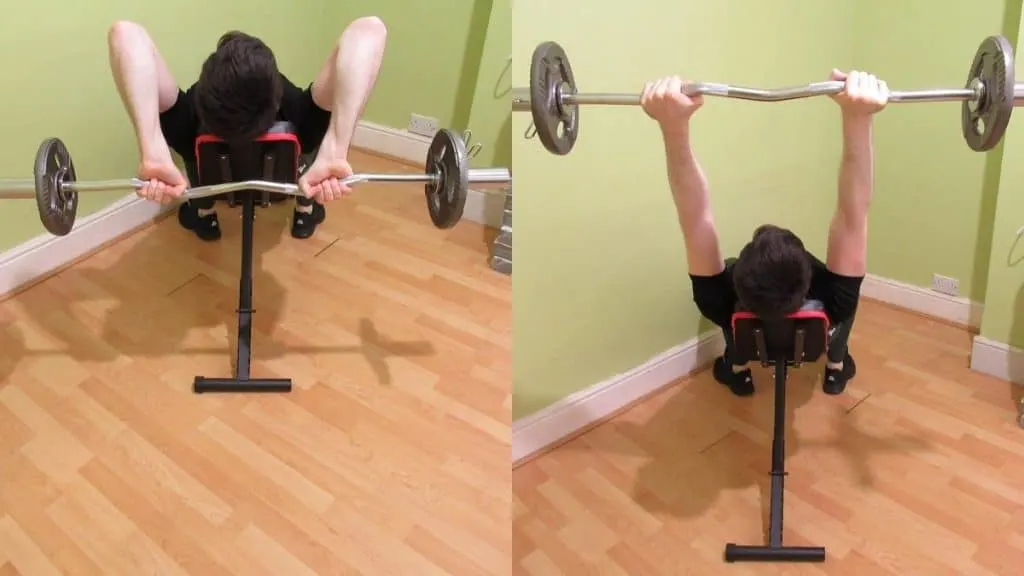
Perform incline EZ tricep extensions 1-2 times per week and do 3-5 sets of 8-20 reps per session.
I’m reluctant to recommend a training frequency of more than twice a week for free-weight tricep extensions because such exercises put more torque through your elbows than the likes of pushdowns.
So, while you can train your triceps more than twice per week, you should limit EZ incline tricep extensions to no more than twice a week because tendons, ligaments, and joints all take much longer to recover than muscle tissue.
As a fast-twitch muscle group, the triceps respond particularly well to heavy weights, low reps, and explosive lifting. However, you should reserve the really heavy lifting for your compound presses and stick to moderate or high repetitions for your single-joint isolation work so that your elbows don’t take too much of a beating.
How effective is the incline EZ bar tricep extension?
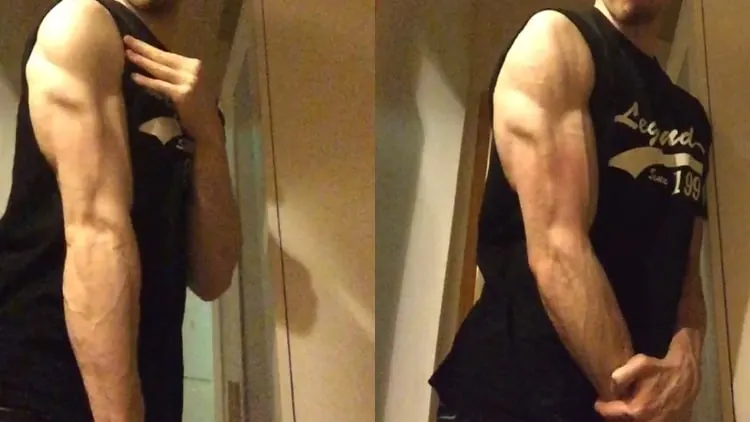
Incline EZ bar tricep extensions are a highly effective muscle-building movement because they train all three heads of the triceps, which is the muscle that accounts for roughly two-thirds of your upper arm size.
But since your shoulders are in a flexed position during the exercise, EZ bar incline tricep extensions are made yet more effective because they put the long head, which is the largest head of the triceps, under what one would have to term a skin-splitting muscle stretch.
So for making your arms thicker, the incline EZ bar extension is just about the best exercise that you can do because it targets the single biggest muscular region of your upper arms, the all-important long head.
Using an EZ bar rather than dumbbells is also better for your long-term strength progression because you can increase the resistance in very manageable increments by using small or even fractional weight plates.
So whether your primary training goal is maximum triceps mass or seriously strong arms, incline EZ bar extensions are a great weight lifting exercise that just about any gym-goer can benefit from.
Are EZ bar incline tricep extensions safe?
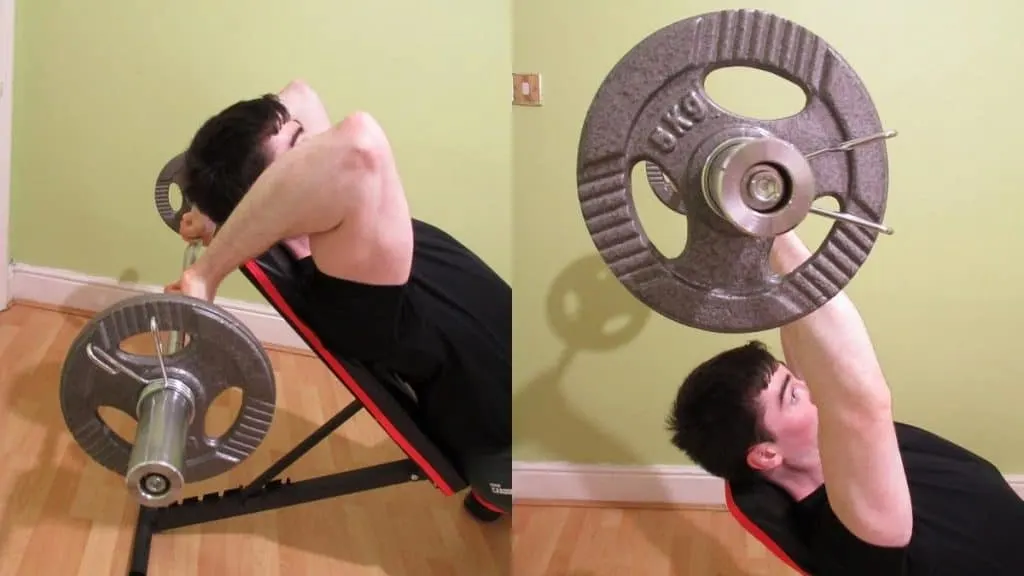
Incline EZ bar triceps extensions are safer than the incline barbell triceps extension because EZ bars have semi-pronated grips that put less pressure on your wrists and which are more comfortable to hold.
The only real downside of the incline EZ bar triceps extension—and this is a drawback that’s shared by the barbell version—is that you could get stuck with the bar behind the bench.
If your triceps reach muscular failure at the bottom of the rep, then it’s not like you can use your lats to bring the weight forward (like you can in the dumbbell variation) because the bench and your head are in the way.
Therefore, if you want to test your triceps on the EZ bar incline tricep extension, make sure that you have a spotter that can take the bar off you once you’re unable to lift the weight by yourself.
If you train at home or don’t have access to a spotter for any reason, then you could always do the lying EZ-bar decline triceps extension instead. With the decline version, you won’t get stuck with the bar behind your head because you can easily lower it to the floor, which will only be a matter of inches away.
Similarly, the incline EZ bar tricep extension can cause rotator cuff discomfort for some lifters because your shoulders are in a high degree of flexion (a bit like in an overhead extension). So you might want to stick to the flat version if you have poor shoulder mobility or a history of rotator cuff injuries.
Read More: Cable incline triceps extension
Conclusion
The incline EZ bar triceps extension is a mass-building movement that can dramatically improve the size and aesthetics of your arms by training the critical long head of the triceps.
Just make sure to bring the bar behind your head rather than to your face so that you can take full advantage of the skin-splitting stretch that I spoke about earlier.
Even though lifting the weight is the hardest part of the rep, the eccentric phase of the repetition is just as, if not more, important for maximizing hypertrophy.
Nowhere is that truer than with the incline EZ bar tricep extension.

